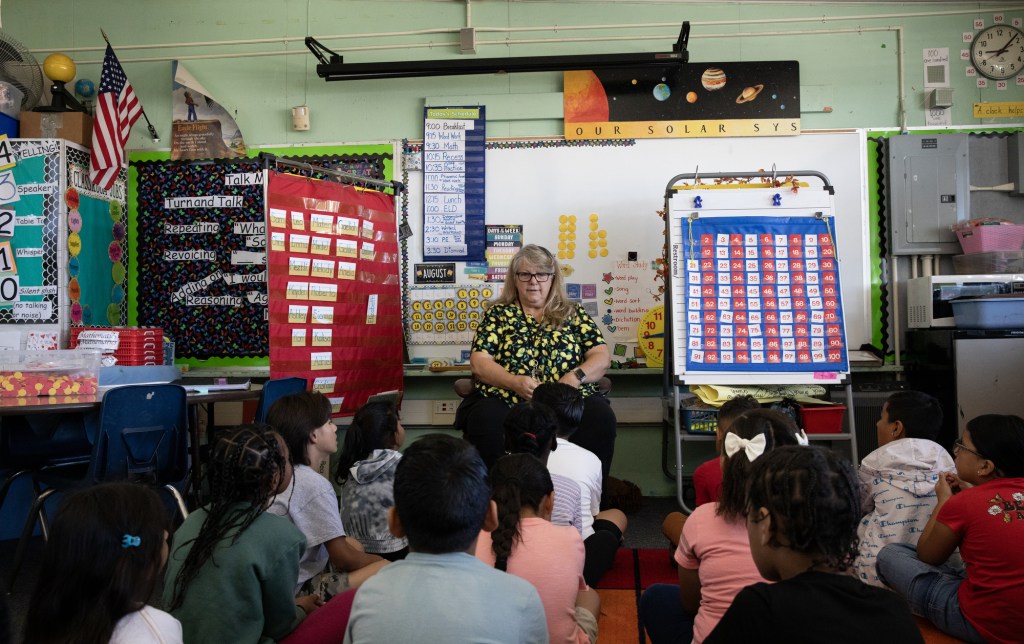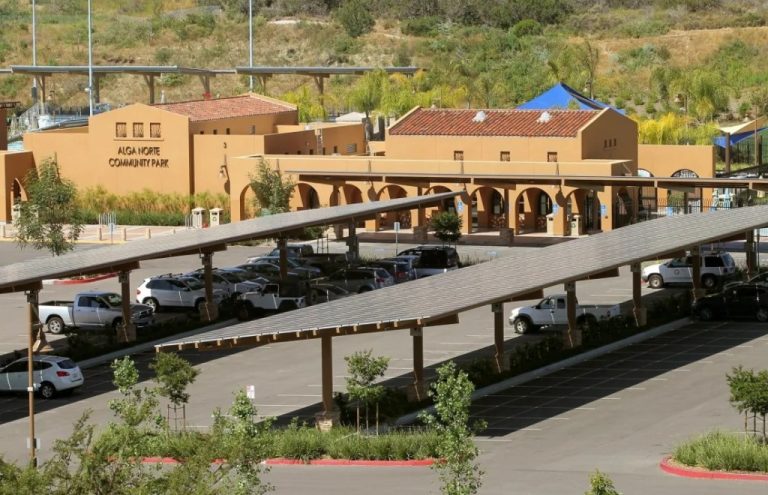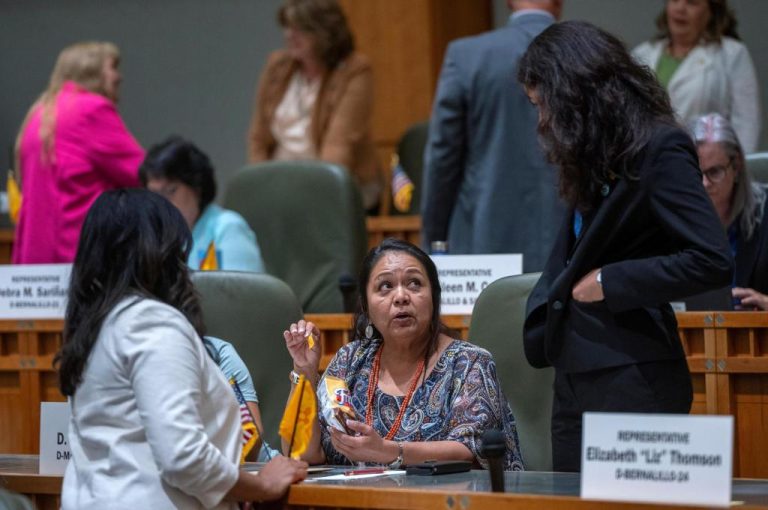
San Diego County and California leaders in K-12 public education are bracing for a second Donald Trump presidency that they say is likely to threaten federal funding for low-income, special-education and other vulnerable students, erode protections for LGBTQ+ students and promote particular ideas of patriotism in schools.
Trump built his education platforms around ideas of what he calls parental rights, state control over education, traditional family and gender roles, patriotism and school choice.
Experts say Trump will likely use the power of the purse and other tactics in an effort to replace what his platform considers to be radical ideas in schools, such as the position that racism is embedded in U.S. institutions, with what he considers to be patriotic ideas, such as those he advanced with his 1776 Commission in response to the Black Lives Matter movement.
More specifically, Trump has said he will defund schools he believes are teaching critical race theory or “gender indoctrination,” dismantle the U.S. Department of Education and assign its duties to other federal agencies. Some of his plans would require action by Congress, but with a Republican-controlled Congress by his side, experts say Trump has a high chance of success.
Trump’s plans may sound shocking in progressive areas of California but are far from unprecedented, said Agustina Paglayan, a UC San Diego political science professor and author of “Raised to Obey: The Rise and Spread of Mass Education,” a new book about how Western governments have used public education to control citizens.
“Everything that Trump wants to do … is actually not an anomaly at all, and it follows a global pattern,” Paglayan said. “Governments are particularly interested in using education to teach people that the status quo is actually OK, and you shouldn’t question it.”
California’s Democratic leaders have already said they will fight future actions by Trump that they say would contradict the state’s values. Gov. Gavin Newsom is convening a special legislative session Dec. 2 he says intends to “safeguard California values and fundamental rights,” such as protections for LGBTQ+ people, women and immigrants.
Less money
One of the most substantial policy impacts that experts and educators are anticipating from Trump for K-12 schools is the reduction or elimination of federal funding.
Federal funding makes up a small percentage of funding for schools, typically less than 10%. But much federal funding goes to some of the most vulnerable students, including students at high-poverty schools — which enroll higher proportions of students of color — and students with disabilities.
One of Trump’s campaign promises was to federally defund any schools that he believes are teaching what he calls critical race theory or “gender indoctrination.” It wouldn’t be hard for Trump to identify such schools, Paglayan said, because parents have already been reporting school districts with what they believe is questionable content, with the help and encouragement of national conservative organizations.
A Trump-led government could change federal entitlement funding, such as Title I for high-poverty schools, into block grants for states, said Jonathan Collins, an assistant professor of political science and education at Columbia University.
That would allow states to decide how to distribute them and to attach conditions to federal funding for school districts; it would also eliminate the guarantee that schools would receive federal funding for vulnerable students, he said.
“Whether or not kids in poverty get any actual additional financial assistance will depend on the politics of their states,” Collins said. “What this could potentially look like is an apartheid system where, in red states, education accountability and education investment looks one way and in blue states it looks another.”
In San Diego Unified, federal funding only makes up less than 6% of the district’s total current-year budget — about $95 million.
That includes about $37 million in Title I funding, $23.7 million in special education funding and $10 million in “impact aid” meant to help school districts support “federally-connected” students, such as students of military families and students living on Indian lands.
While federal money doesn’t make up much of San Diego Unified’s overall $1.9 billion budget, any loss of funding would exacerbate the district’s existing financial deficit, which totals $176 million for its unrestricted side of the budget.
And any loss of Title I funding will be acutely felt on the individual school level — especially for the highest-poverty schools that lack foundations or parent-teacher associations to raise significant amounts of money and rely on Title I to pay for additional needed staff beyond the district’s lean staffing ratios.

For example, Perkins K-8 in Barrio Logan, where more than 90% of students are low-income, gets about $206,000 each year in Title I funding. That pays for the salary and benefits of the school’s longtime and beloved dean, who acts as a vital support for many students suffering from poverty and other traumas.
“That’s my biggest worry: a lot less money that we truly, truly need,” Principal Fernando Hernández said of the risk of losing Title I funding.
Blue states like California may choose to step in and “rescue” schools by backfilling lost federal funding. But California would likely be limited in its options, given its financial deficit.
“I don’t know where the revenue would come from at this moment. But it is an option that the (state) legislature could consider,” Paglayan said.
Less oversight
Another of Trump’s most noted education platforms is to dismantle the U.S. Department of Education, first established in 1979 by President Jimmy Carter.
The department oversees the distribution of federal education funding and grants and provides guidance and best practices for schools. It also enforces protections for students via its Office of Civil Rights, which recently investigated San Diego Unified for failing to uphold Title IX protections for students against sexual harassment and assault.
Eliminating the department wouldn’t necessarily eliminate the functions of the department. Rather, experts say it’s likely Trump would assign its functions to other existing federal agencies, which is the plan outlined in Project 2025, a playbook for Trump’s presidency written by supporters and former staff.
The idea behind abolishing the department is to reduce administrative “bloat,” give more control over education to the states and weaken teachers unions, which benefit from having a single agency at the federal level to lobby.
Educators and experts also say Trump could easily step away from federal Title IX civil rights protections for LGBTQ+ students that have been upheld by the department under Biden.
California already has some legal protections of its own for these students.
The state just enacted AB 1955, which bars schools from requiring its employees or contractors to disclose information about a student’s sexual orientation, gender identity or gender expression to anyone without the student’s consent, unless otherwise required by law.
All California children have a right to a free public education regardless of their or their parents’ immigration status, and state law says schools cannot collect information or documents about a student’s or their family’s immigration status.
Other Trump campaign promises included promoting the elimination of teacher tenure, as well as the use of performance-based pay for teachers, rather than pay that automatically rises based on years of experience and education levels.

‘There is that fear’
Aside from policy and funding changes, educators worry that Trump’s return will usher in a climate hostile particularly to LGBTQ+ students, immigrant students and students of color.
“More immediately in front of us right now is the trauma that we know a lot of our students and families are already experiencing in anticipation of what the Trump administration is going to do, and that includes our immigrant families, it includes our LGBTQ students and their families,” said San Diego Unified board Trustee Richard Barrera.
Trump’s promises of mass deportations, if realized, would bring disruption to many students. About 9% of California’s K-12 students have at least one parent who is an unauthorized immigrant, according to estimates from the Pew Research Center.
San Diego Unified officials, who have been vocal about supporting LGBTQ+ students and students of color, have already started preparing for Trump’s presidency. The district plans to remind and clarify to principals and families existing policies that, for example, say schools will not provide information to immigration enforcement agencies without parental consent unless required by subpoena or court order.
District leaders also plan to hold “know your rights” forums at schools in partnership with local advocacy organizations, similar to what the district did during Trump’s first presidency, Barrera said.
“I know there is that fear, and we want to respond and let our community know that we’re here to educate them, to provide them safe spaces in our schools, whatever that looks like,” said Enrique Ruacho, senior executive director of staff for San Diego Unified. “In many ways, we’re more prepared because of the first administration. So the second time, in many ways, is reminding our communities: ‘Hey, we’ve been here before — it’s not the first time.’”







